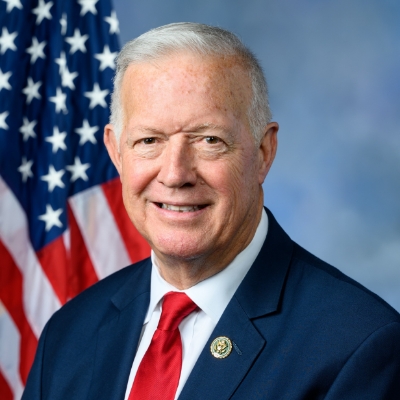Press Releases
ICYMI: Chairman Weber Opening Statement during Sst Subcommittee on Energy Hearing
Washington, DC,
February 15, 2017
U.S. Rep. Randy Weber (TX-14), chairman of the U.S. House Science, Space and Technology (SST) Committee’s Subcommittee on Energy, delivered the following opening statement today during the House Committee on Science, Space and Technology hearing entitled "Risky Business: The DOE Loan Guarantee Program.” The witnesses included: Ms. Diane Katz, senior research fellow in regulatory policy, Thomas A. Roe Institute for Economic Policy Studies, The Heritage Foundation; Mr. Chris Edwards, director, Tax Policy Studies, Cato Institute; Mr. Dan Reicher, executive director, Steyer-Taylor Center for Energy Policy and Finance, Stanford University; and Dr. Ryan Yonk, assistant research professor, Department of Economics and Finance, Utah State University, research director, Institute of Political Economy, Utah State University.
As prepared for delivery: Today, we will have the opportunity to review the past, present, and future of the Department of Energy’s loan program. I want to thank our panel of witnesses for joining us in this important discussion about the appropriate federal role in supporting energy innovation. Established by the Energy Policy Act of 2005, the DOE loan guarantee program was designed to give federal support to risky, innovative, clean energy technology. Under a federal loan guarantee, instead of the private sector taking on risk to fund the scale up of new technology, the government steps in, risking federal dollars on the hopes for success of energy projects. Through the Section 1703 and 1705 programs, the Department guaranteed loans to 30 energy companies, putting $28 billion in taxpayer money on the line. After Congress approved over $2 billion to subsidize the costs of loan guarantees, the DOE issued more than $16 billion in guarantees to 26 different projects. In these subsidized loans, known as Section 1705 loans, companies not only received government backing for their loan, but additional taxpayer dollars were authorized to pay the “credit subsidy cost” of the loan, or the estimated cost to the federal government to manage the loan over its lifetime. Easy money combined with political pressure to issue loans before the temporary subsidy program expired led the DOE to rush loan applications. Both the DOE Inspector General and Government Accountability Office found that the DOE did not have the necessary expertise or metrics to effectively evaluate these loans. Predictably, a number of companies that received Section 1705 loans went into default. In total, over $800 million dollars in taxpayer money has been wasted by the DOE loan program. It’s clear the DOE loan guarantee program is expensive – the GAO estimates that the cost for the current loan guarantees is $2.2 billion – but supporters argue the cost is justified if we can help innovative technologies make the leap to the commercial market. But, what if federal meddling in the market actually hurts innovation? As we will hear in testimony today, when the federal government provides loans and loan guarantees to favored technologies, innovation stalls. While federal government support helps loan guarantee winners attract capital, it draws capital away from other innovative ideas in the market. And since large companies with the resources to lobby on behalf of their projects often have an advantage in the loan application process, the DOE loan guarantee program pushes capital away from the start-ups and entrepreneurs that often have the most innovative ideas. We need to be opening doors for these small innovators – not closing them by pushing investors towards federally backed, risk-free investments. Additionally, taxpayers often end up paying higher prices for their power because of federal government meddling in the energy market. For example, when the DOE provided a $1.6 billion loan guarantee to the Ivanpah solar project in California, the state mandated the use of renewable power, and utilities entered into contracts to buy power from the DOE-backed facility. Unfortunately, the ratepayers in Southern California will now pay two to five times more for power generated by this facility in addition to being stuck with the bill if the project fails and goes into default. The truth is, when the DOE provides loan guarantees, there is no benefit for the taxpayer even if the guaranteed loan is paid in full. Regular Americans take on the liability of the full loan, they don’t see a return, and can end up paying more for their electricity if the project is actually built. The DOE loan guarantee program is just another way the federal government picks winners and losers in the energy market. It doesn’t guarantee innovation or cost savings, and it doesn’t guarantee access to capital for the next generation of energy technology. The only thing guaranteed for the taxpayer is extra cost and extra risk. It’s our responsibility in this Committee to examine Department of Energy programs, and ensure our limited resources prioritize the kind of research and science facilities that open doors for all kinds of innovators. The Department can’t prioritize the basic research it does best when it’s playing venture capitalist. Therefore, I think we need to take a hard look at the DOE loan guarantee program, and determine whether it’s an appropriate way to spend federal research dollars. In my opinion, and in the testimony you’ll hear today, the American people would be better served if the federal government stopped picking winners and losers, focused on research and development, and let the market drive investment for energy innovation. ### |

